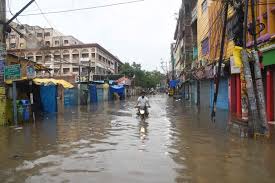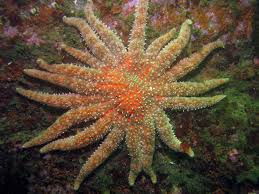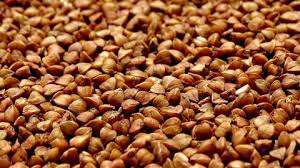Today’s Current Affairs: 7th August 2025 for UPSC IAS exams, State PSC exams, SSC CGL, State SSC, RRB, Railways, Banking Exam & IBPS, etc
Table of Contents
Inter State Transmission System:

About 26 gigawatt of renewable energy (RE) projects are expected to be impacted with the end of waiver on inter-State transmission system (ISTS) charges provided for solar and wind projects, according to Crisil Ratings.
- It is a high-voltage power transmission network that enables electricity to flow seamlessly across state borders in India.
- It connects power-rich regions with energy-deficient areas.
- This ensures a balanced and efficient distribution of electricity.
- It is managed by the Central Transmission Utility of India Limited (CTUIL), a 100% subsidiary of Power Grid Corporation of India Limited (POWERGRID) under the Ministry of Power.
- ISTS operates at voltages above 132 kV and reduces transmission losses and enhances grid stability.
- This system allows solar and wind power to be transmitted nationwide and plays a crucial role in large-scale ISTS renewable energy projects.
- ISTS eliminates state-wise transmission restrictions and creates a unified energy market where electricity can be supplied based on demand.
Overcoming geographical constraints, ISTS makes the power sector more reliable and efficient. - Electricity is generated from various sources, including solar farms, wind parks, hydro plants, and thermal stations.
- The generated power is transmitted to ISTS substations, which are high-voltage facilities managed by the Central Transmission Utility (CTU). These substations step up the voltage to reduce transmission losses.
- The electricity is transported through a network of 132 kV and above transmission lines that span multiple states, ensuring minimal energy loss over long distances.
- The Regional Load Dispatch Centers (RLDCs) and the National Load Dispatch Center (NLDC) monitor and regulate electricity flow, ensuring supply matches demand.
- Power is stepped down at state-level substations and supplied to industries, businesses, and residential areas via the State Transmission Utility (STU) and local distribution networks.
Legal Insanity:

The Chhattisgarh High Court recently acquitted a man of double murder due to legal insanity, highlighting the importance of mental state in trials.
- It is a term used to describe a mental state that is severe enough to prevent a person from having legal capacity and excuses them from criminal responsibility.
- It is a recognised defence in criminal law.
- It is based on the assumption that at the time of the crime, the defendant was suffering from severe mental illness and therefore, was incapable of appreciating the nature of the crime and differentiating right from wrong behavior, hence making them not legally accountable for the crime.
- The insanity defense is a legal concept, not a clinical one (medical one). This means that just suffering from a mental disorder is not sufficient to prove insanity.
- To benefit from legal insanity, the accused must establish, often through psychiatric or psychological evaluations, that they were not in control of their reasoning faculties during the commission of the prohibited act.
- The accused must present a prima facie case, supported by reasonable materials, to establish their legal insanity.
- This may involve presenting evidence of their conduct before, during, or immediately after the offence, along with relevant medical documentation.
- The objective is to convince the court that, due to mental incapacity, the accused should be exempt from full criminal responsibility.
- There are different types of legal insanity, such as emotional insanity, which is when a person experiences a violent excitement of emotions or passions that creates complete derangement of intellect.
- Another type is temporary insanity, which only exists at the time of a criminal act.
- The Supreme Court in Surendra Mishra vs. State of Jharkhand (AIR 2011 SC 627) emphasised that every person suffering from a mental disease is not automatically exempted from criminal liability.
- The accused bears the responsibility of proving legal insanity and the onus can be discharged by demonstrating their conduct with reference to their medical condition.
- Medical Insanity refers to a state of mental illness or psychological disorder that may require medical treatment.
Pradhan Mantri Matru Vandana Yojana : Extension

The Ministry of Women and Child Development has extended the special registration drive for the Pradhan Mantri Matru Vandana Yojana (PMMVY) till 15 August, 2025.
- It is a centrally sponsored scheme under Mission Shakti’s sub-scheme ‘Samarthya’, providing direct financial assistance through the Direct Benefit Transfer (DBT) mode.
- It is designed to support pregnant women and lactating mothers.
- The scheme is to provide maternity benefits to women belonging to socially and economically disadvantaged sections of society.
- It aims to improve health-seeking behaviour among pregnant women and lactating mothers and ensure better maternal and child health outcomes across the country.
- Under PMMVY, a cash incentive of Rs 5,000 is provided in two installments directly to the bank/post office account of pregnant women and lactating mothers for the first child in the family.
- The eligible beneficiaries also receive the remaining cash incentive as per approved norms towards Maternity Benefit under Janani Suraksha Yojana (JSY) after institutional delivery so that, on average, a beneficiary gets Rs 6,000.
- Cash incentive of Rs 6,000 is also provided under PMMVY to eligible beneficiaries for a second child subject to the second child being a girl.
- In case of miscarriage/stillbirth, the beneficiary would be treated as a fresh beneficiary in the event of any future pregnancy.
- The implementation of the Scheme is done by officials of States and UTs through their field functionaries using the new Pradhan Mantri Matru Vandana Yojana Software (PMMVYSoft) that was launched in March, 2023.
- Under PMMVYSoft, Aadhaar authentication through UIDAI is done digitally, and National Payment Corporations of India (NPCI) verification is ensured so that funds are directly transferred to their DBT-enabled Aadhaar-seeded bank or post office accounts.
Smithophis leptofasciatus : New Species Of Rain Snake

A team of researchers from Mizoram University recently discovered a new species of rain snake named Smithophis leptofasciatus.
- It is a new species of rain snake belonging to the genus Smithophis.
- The species name leptofasciatus is derived from Greek and Latin, meaning “narrow-banded,” referencing its distinctive dorsal markings.
- It is commonly referred to as the narrow-banded rain snake.
- It was discovered in the tropical montane forests of Mizoram.
- The new species is distinguished by its narrow, incomplete creamish-white or yellowish-lime transverse bands on a shiny black body—features that set it apart from its close relatives.
- It was found inhabiting humid, shaded microhabitats near small streams in montane forests between 900 and 1,200 meters above sea level.
- Its semi-aquatic, nocturnal lifestyle was revealed through field observations during the monsoon.
- This brings the total number of known Smithophis species to five, all discovered in northeastern India and its surrounding areas.
- These snakes are commonly referred to as ‘rain snakes’ because they thrive in wet habitats, often found near streams and other water sources.
District Flood Severity Index:

Researchers from IIT Delhi and IIT Gandhinagar have developed a District Flood Severity Index.
Key findings of District Flood Severity Index:
- Patna turns out to be number one on the index followed by many districts in the Indo-Gangetic Plain and in Assam.
- Thiruvananthapuram is number one in terms of flooding events, it is absent in the top 30 districts in the flood severity index.
- Dhemaji, Kamrup, and Nagaon districts in Assam are three of the five districts in India that have experienced over 178 flooding events, or more than three events per year on an average.
- Urban flooding occurs partly because of hydrometeorological reasons and also due to unwise urban development.
District Flood Severity Index:
- It accounts for the historical severity of floods in India based on the number of people they have affected and the spread and duration of such floods.
- Parameters used
- It takes into account the mean duration in days of all flooding events in a district.
- Percentage of area that is historically flooded
- Total number of deaths, number of people injured
- Population in the district
- It is developed using the India Flood Inventory with Impacts (IFI-Impacts) database containing data of variables representing the occurrence of floods and damage due to floods.
- India Flood Inventory with Impacts contains death and damage statistics, and combines population and historically flooded area information sourced from a national hydrologic-hydrodynamic modeling system.
- Since the district is the most relevant unit for planning and decision making, a DFSI would be of immense value for flood management.
Biochar:

The Indian carbon market set to be launched in 2026, CO2 removal technologies such as biochar are expected to play a crucial role.
- Biochar is a type of charcoal rich in carbon and is produced from agricultural residue and organic municipal solid waste.
- It offers a sustainable alternative to manage waste and capture carbon.
- It is granular material obtained by heating crop residue at 400°C to 600°C in a kiln-shaped structure in the absence of oxygen.
- It can hold carbon in the soil for 100-1,000 years due to its strong and stable characteristics, making it an effective long-term carbon sink.
- Applying biochar can improve water retention, particularly in semi-dry and nutrient-depleted soils. This, in turn, can abate nitrous oxide emissions by 30-50%.
- Biochar can also enhance soil organic carbon, helping restore degraded soils.
- In carbon capture applications, modified biochar can adsorb CO₂ from industrial exhaust gases. However, its carbon removal efficiency is currently lower than that of conventional methods.
- Biochar can be explored as a low-carbon alternative to building materials and makes building materials a stable carbon sink.
- Biochar offers a low-cost and effective option to reduce pollution.
Sunflower Star Fish:

Scientists have found the culprit of a mysterious disease which started killing off sunflower starfish in droves — more than 5 billion are estimated to have died since 2013 is a bacterium called Vibrio pectenicida.
- The Sunflower Sea Star (Pycnopodia helianthoides) is among the largest and fastest sea stars in the world.
- It is commonly found on various substrates like mud, sand, gravel, boulders and rock. They are found from the intertidal coastal waters zone to 435 m, however, most are found no more than 120 m.
- It lives along the vast majority of the Pacific coast of North America.
- It has a radially symmetrical body and has more arms than any other species, numbering between 15 and 24 (most sea stars have between 5 and 14).
- There is no sexual dimorphism within these species. Fertilization is external.They breed by broadcast fertilization between March and July
- They have the ability to regenerate its arms which may detach as a means of defense when handled excessively or attacked by a predator.
- A whole new sea star may form if the detached arm has a portion of the central disk included.
- These species are primarily carnivorous, feeding on mussels, sea urchins, fish, crustaceans etc.
- These are opportunistic hunters of a wide range of marine invertebrates, and in some areas are important predators that regulate surrounding ecosystems.
- As a predator of sea urchins, which graze kelp, the species helps keep kelp forests healthy.
Seabuckthorn and Himalayan Tartary Buckwheat:

Seeds of seabuckthorn and Himalayan Tartary Buckwheat from Ladakh have been sent to the International Space Station (ISS) by NASA’s Crew-11 mission as part of the “Emerging Space Nations’ Space for Agriculture & Agriculture for Space” payload.
- The seeds will return to Earth with NASA’s Crew-10 mission. The experiment aims to develop resilient crops for space and Earth, blending science with traditional agricultural knowledge.
- Sea buckthorn (Hippophae rhamnoides L.): Also known as the “Wonder plant” or “Ladakh gold,” is a hardy, drought-resistant shrub found across Europe and Asia, including the cold deserts of the Himalayas.
- It tolerates extreme temperatures (–43°C to +40°C), fixes atmospheric nitrogen, and helps prevent soil erosion and prevents desertification.
Traditionally, all parts of the plant (fruit, leaves, roots, thorns) are used for medicine, nutrition, fuel, and fencing. - Himalayan Tartary Buckwheat is Cultivated in China, Bhutan, northern India, Nepal, and central Europe, is known for its greater cold and drought resistance.
- It offers health benefits due to its content of resistant starch, proteins, minerals, and phenolic substances, which help prevent chronic diseases like hypertension, obesity, and cardiovascular issues.
Russia has formally withdrawn from the 1987 Intermediate-Range Nuclear Forces (INF) Treaty:
INF Treaty (1987): Signed by the US and the Soviet Union, it banned all ground-launched ballistic and cruise missiles with a range of 500–5,500 km. It aimed to reduce nuclear threat and promote global arms control.The US exited the INF Treaty in 2019, accusing Russia of violating it, which had already weakened the treaty’s relevance.Russia claimed the treaty’s conditions no longer exist, and it cited US deployment of Typhon missile systems in the Philippines and missile drills in Australia (Talisman Sabre exercises) as a direct threat to its national security. It Raises fears of a renewed nuclear arms race and weakens global non-proliferation and arms control efforts.
Sarnath Nominated for UNESCO World Heritage:
India has officially nominated the ‘Ancient Buddhist Site, Sarnath for the UNESCO World Heritage List under the 2025–26 nomination cycle. Sarnath has been on UNESCO’s “tentative list” since 1998.Sarnath, located near Varanasi, Uttar Pradesh, is a major Buddhist pilgrimage site where Gautama Buddha delivered his first sermon (Dhammachakkappavattana) after enlightenment. It is also known by names such as Rishipatana, Mrigadava, and Mrigadaya. The modern name is believed to be derived from Saranganatha (“Lord of the Deer”). Sarnath is one of the 4 key pilgrimage sites in Buddhism, along with Lumbini, Bodh Gaya, and Kushinagar, associated with the birth, enlightenment, first sermon, and death of Buddha respectively. Ashes of the Buddha were enshrined in stupas at these locations to commemorate significant events in his life.
Carriage of Goods by Sea Bill, 2025:
Parliament has passed the Carriage of Goods by Sea Bill, 2025, replacing the outdated Carriage of Goods by Sea Act, 1925. Carriage of Goods by Sea Bill, 2025 is a new legislation passed to modernise India’s maritime trade laws. It repeals the nearly 100-year-old Indian Carriage of Goods by Sea Act, 1925, a colonial-era law.
Objectives:
- Align India’s shipping laws with global best practices such as the Hague–Visby Rules.
- Promote ease of doing business by simplifying legal language and reducing ambiguities.
- Enhance India’s competitiveness as a maritime trade hub.
- Empower India to swiftly adopt future international maritime conventions.
Vanatara Zoo:
Maharashtra CM held a meeting with the Vantara team over public outrage on the relocation of elephant Madhuri (Mahadevi) from Kolhapur to Jamnagar.Vantara (meaning Star of the Forest) is a private, non-commercial wildlife rescue and rehabilitation centre. Developed by the Reliance Foundation, it is led by Anant Ambani as a philanthropic initiative under Reliance Industries.Located inside the Jamnagar Refinery Township, Gujarat, spanning 3,500 acres in Motikhavdi village, Jamnagar district. Inaugurated: March 2025 Mission is to provide care, conservation, and rehabilitation for injured, abandoned, and rescued animals.
WHO officially classified Hepatitis D virus as carcinogenic:
The World Health Organization (WHO) and the International Agency for Research on Cancer (IARC) have officially classified Hepatitis D virus (HDV) as carcinogenic, placing it in Group 1 — known causes of liver cancer, alongside Hepatitis B and C.Hepatitis D is a blood-borne viral infection that requires the presence of Hepatitis B virus (HBV) to replicate. HDV cannot exist independently and occurs as co-infection (simultaneous with HBV) or superinfection (after existing HBV).
Great Recall Vote:
Taiwan has launched the largest recall vote in its history against 31 opposition lawmakers from the Kuomintang (KMT) party. “Great Recall” Vote is A mass legislative recall referendum targeting KMT lawmakers in Taiwan. Citizens are voting to remove 31 KMT legislators in two phases (July and August 2025). It is the largest recall exercise under Taiwan’s constitutional provision allowing removal of elected officials.Taiwan, officially the Republic of China (ROC), with deepening democratic processes. Democratic Progressive Party (DPP) vs Kuomintang (KMT) rivalry is at the heart of this political conflict.




